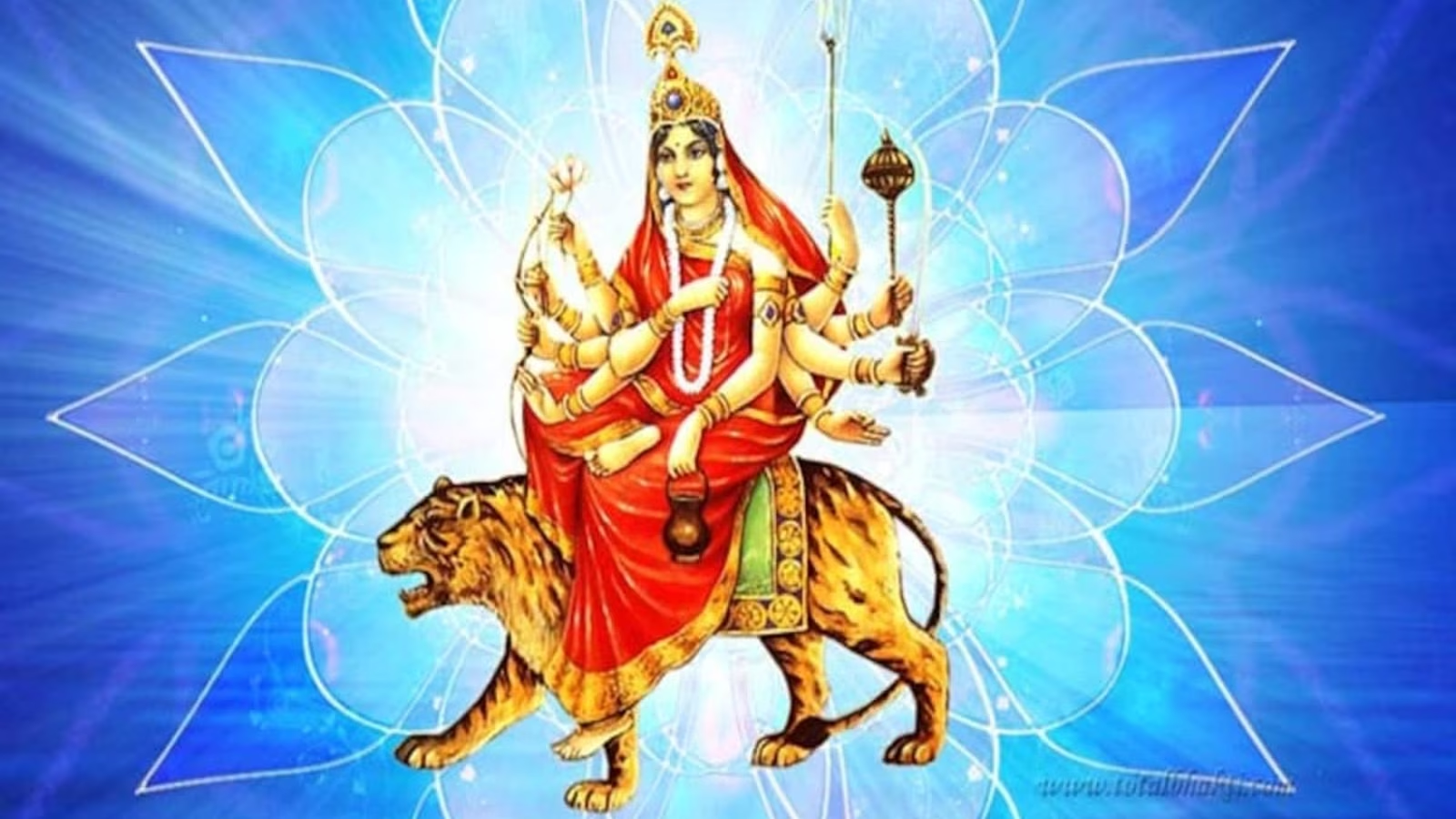Navratri 2024 Day 3 Colour: Who is Maa Chandraghanta? Puja Rituals, Shubh Muhurat, Significance, Mantra, and Bhog to Offer

The vibrant Hindu festival of Shardiya Navratri commenced on October 3 and will continue until October 12, celebrating the various forms of Goddess Durga.
The vibrant Hindu festival of Shardiya Navratri commenced on October 3 and will continue until October 12, celebrating the various forms of Goddess Durga. This nine-day festival is marked by devotion, community spirit, and various rituals to honour the goddess. The festivities conclude on the tenth day with Dussehra (Vijaya Dashami), symbolizing the triumph of good over evil.
Navratri Day 3: Honoring Goddess Chandraghanta
Day 3 of Navratri is dedicated to Maa Chandraghanta, the third incarnation of Goddess Durga. Devotees gather to offer heartfelt prayers and engage in rituals, showcasing their deep devotion and seeking her blessings. Maa Chandraghanta represents the married aspect of Goddess Parvati.
Maa Chandraghanta is typically depicted riding a tigress, with a crescent moon on her forehead resembling a bell, which inspired her name. She is portrayed with ten arms, each holding symbolic items. In her left hands, she carries a Trishul (trident), Gada (mace), sword, and Kamandal (water pot), while her fifth left hand is in Varada Mudra (gesture of giving). Her right hands hold a lotus, arrow, Dhanush (bow), and Japa Mala (rosary), with the fifth right hand in Abhaya Mudra (gesture of protection).
Shardiya Navratri 2024 Day 3: Puja Mantra, Stuti, and Stotra
Devotees recite specific mantras and prayers to invoke the blessings of Maa Chandraghanta:
1. Om Devi Chandraghantayai Namah॥
2. PindajaPravararudhaChandakopastrakairyuta.
Prasadam TanuteMahyamChandraghantetiVishruta॥
3. Ya Devi Sarvabhuteshu Maa ChandraghantaRupenaSamsthita.
NamastasyaiNamastasyaiNamastasyai Namo Namah॥
Navratri Day 3 Colour: Grey
On the third day of Navratri, the colour grey is worn to pay homage to Maa Chandraghanta. This colour symbolizes balance and humility, making it an ideal choice for those celebrating the day while offering their prayers to the goddess.
Navratri Day 3: Shubh Muhurat
According to Drik Panchang, the auspicious timings for Day 3 of Navratri are as follows:
• Brahma Muhurat:
o Start Time: 4:39 AM
o End Time: 5:27 AM
• Abhijit Muhurat:
o Start Time: 11:46 AM
o End Time: 12:33 PM
• Pratah Sandhya:
o Start Time: 05:03 AM
o End Time: 06:16 AM
• Amrit Kalam:
o Start Time: 11:41 AM
o End Time: 1:29 PM
Navratri Day 3: Bhog to Offer
During Navratri, it is customary to offer specific prasad to each form of the goddess. For Goddess Chandraghanta, kheer (a sweet rice pudding) is traditionally offered. This offering not only honours the goddess but also expresses gratitude for her guidance and blessings.
Navratri Day 3: Puja Vidhi
The following steps outline the puja vidhi (rituals) for Day 3:
1. Devotees should wake up early in the morning.
2. Take a bath and wear clean, traditional attire.
3. Place the idol of the goddess on a platform or designated prayer space.
4. Purify the idol using Kesar (saffron), Ganga Jal (holy water from the Ganges), and Kewra (screwpine water).
5. Adorn the goddess with traditional garments after purification.
6. Offer jasmine flowers, which are favoured by the goddess.
7. Serve kheer as bhog (offering).
8. Chant various prayers, including mantras, stuti, stotra, kavacha, and aarti, to seek the goddess’s blessings.
Significance of Worshipping Goddess Chandraghanta
Maa Chandraghanta embodies the peaceful aspect of Maa Parvati. The sound of the moon and bell on her forehead is believed to ward off negative energies. In this form, she represents tranquillity and cares for the well-being of her devotees. Worshipping her with devotion and sincerity is said to bring comfort and positivity into one’s life.















